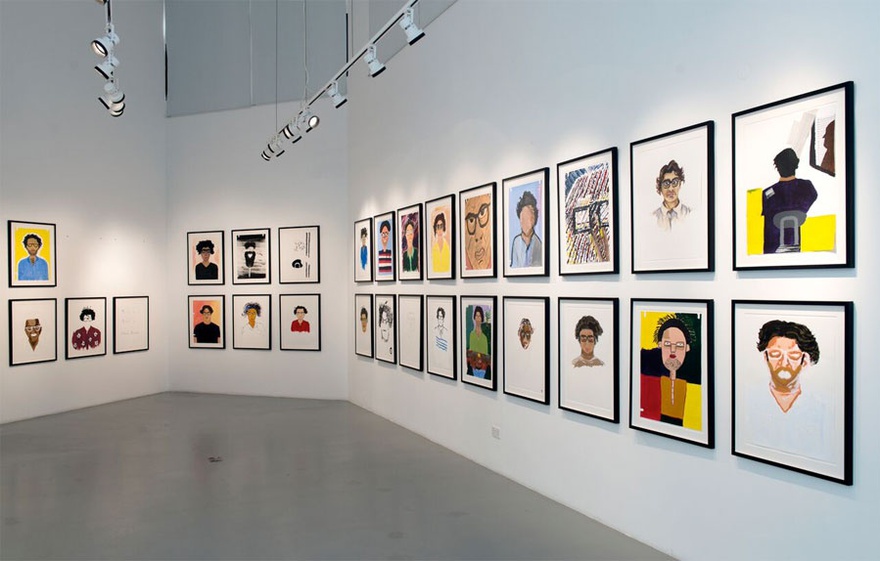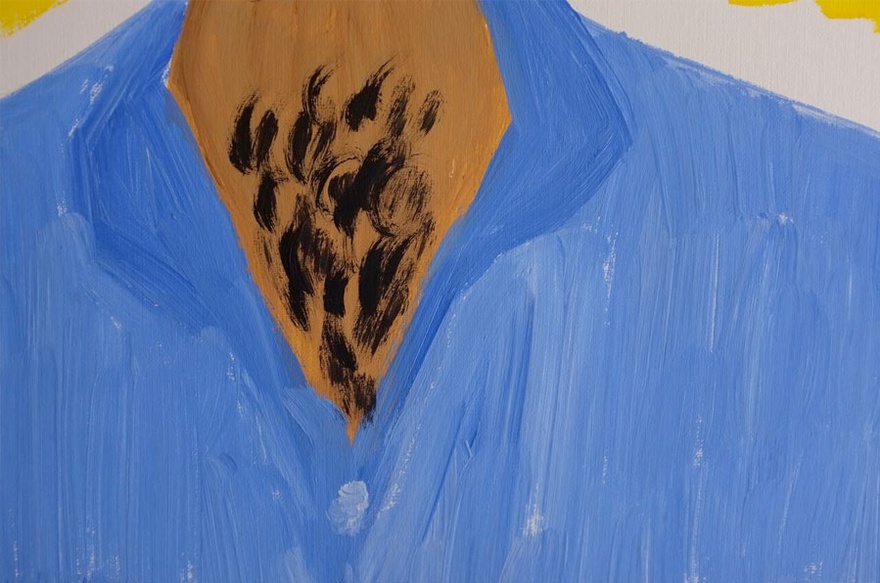Reviews
Portrait Sessions
Vikram Divecha at Tashkeel
Dubai-based Vikram Divecha is one of the few artists working in the Middle East whose practice is socially engaged. Inspired by the metastatic urban expansion in the United Arab Emirates, Divecha regularly collaborates with institutions, infrastructures and communities, identifying and capitalizing on hidden seams within these systems to create interventions and installations that, if only momentarily, disrupt the status quo, bringing their structures and operations into view. Past projects have included a monumental public installation of boulders quarried in the mountains on the country's east coast, which were eventually destined for Dubai's hyperactive construction industry; a subtle collaboration with municipality gardeners to introduce vernacular disruptions into the otherwise regimented hedge design of a popular lagoon-side park in Sharjah; and a recent conversion of an Alserkal Avenue warehouse structure, newly built for art and culture activity, into a temporary storage facility for commercial goods. Relinquishing some if not all control over the formal outcomes of his work was both a conscious desire and a practical necessity in these projects, and Divecha continues to find novel and ingenious ways to achieve this in each new work.
For Portrait Sessions, Divecha's recent exhibition at Tashkeel (7 September–13 October 2016), the artist simply inverted the traditional structure of the titular studio exercise, soliciting non-artists – selected from across different segments of the local labor force – to paint his portrait. Each amateur was paid a fixed amount – a modest one hundred and fifty dirhams – for their time. This amount was not entirely arbitrary. It is what Divecha, whose projects necessitate interactions with all types of workers, has paid past collaborators for a day's worth of manual labor. It functions as a stand in for minimum wage in the absence of a state mandated rate. The length of each session was determined by the participant's wage rate, or in other words, how much their working time was worth – a carefully worded contract-like artist statement that accompanied the exhibition even provided a handy equation for calculating this. Slated to continue through the exhibition's run or until the budget was exhausted, whichever came first, the sessions took place in a small curtained room in the back gallery, a bare bones painting studio equipped with the essentials: a table, a couple of chairs, an easel, reams of paper, bottles of acrylic paint, pencils, brushes, and, notably, a calculator.
The results of these sessions were presented in two neat rows in the main gallery. Though dimensions and format remained consistent the style and 'quality' of the individual portraits, a product of both time and aptitude, varied. Overall, the display had the naïve charm of an exhibition of folk or vernacular art, though a few works managed an impressive degree of mimesis. Divecha's mop of floppy black hair and dark thick-rimmed glasses emerged as shorthand for his likeness as details of the face, the locus of identity, proved tricky and were often left out entirely, resulting in a ghostly white absence in one work and a disconcerting brushy flesh-toned void in another. Others cleverly overcame the anxiety of the face by choosing, instead, to picture the sitter from behind, or dissolve his visage into a colorful pattern of gestural strokes or simply use text, cheekily stating: 'This is a portrait of Vikram Divecha.'
While Divecha's collaborators were allowed to acknowledge their participation in the project, they were contractually prohibited from identifying their individual contribution or revealing the length of their session. This enforced anonymity encouraged the viewer to look closely, to search the portraits for signs of their makers' profession and pay grade. Was the quick and clumsy sketchiness seen in a couple of works the result of limited skill or time? Was the collaged sheet music in another a possible clue to its creator's occupation? The straightforward gridded display reinforced this anonymity, democratizing the results and putting all the portraits on an equal standing, temporarily dismantling class hierarchies based on professional compensation. In this instance, the value of labour is not tied to the nature of the task performed but to how well it is executed. The results together form a single saleable work. If sold, half the proceeds will be distributed among the participants, proportional to the length of their session: the time they worked as an 'artist', preferentially rewarding those who earn less. The project hopes to redistributes the proceeds of selling the work in order to even out real world disparities in income, like some sort of socialist art fund.
Labour practices and worker remuneration continue to be touchy subjects in the United Arab Emirates and across the Gulf. Divecha's playful project asks complex questions about how labour, skill and time are differentially valued here by transposing them into the exceptional, and hence nonthreatening, sphere of contemporary art. However, this shift also challenges art's elite bias by situating artistic practice firmly within a matrix of generalized labour practice, equating artistic labour to all other types, encouraging a sense of solidarity between artists and their fellow workers. The figure of the artist emerges as neither the unbridled creative genius envisioned by Romanticism nor the heroic risk-friendly entrepreneur, whose creativity can trump the growing precarity precipitated by neoliberalism – both definitions that have a certain currency in the region – but a worker like any and all others, who simply and regularly produces.







